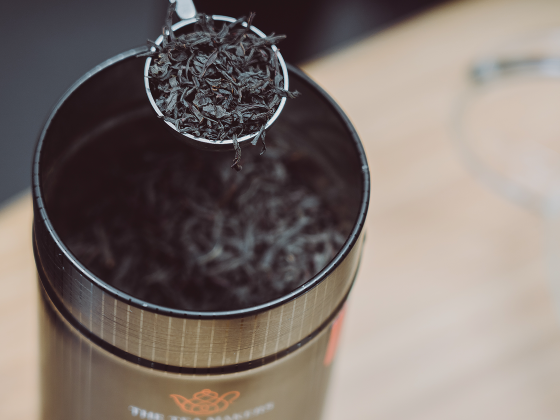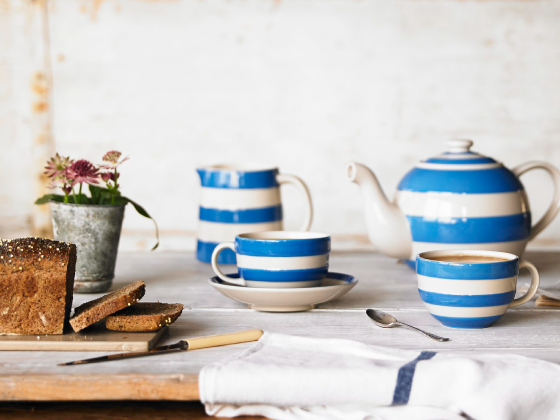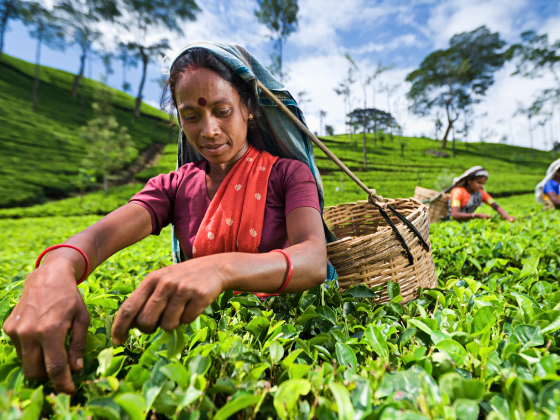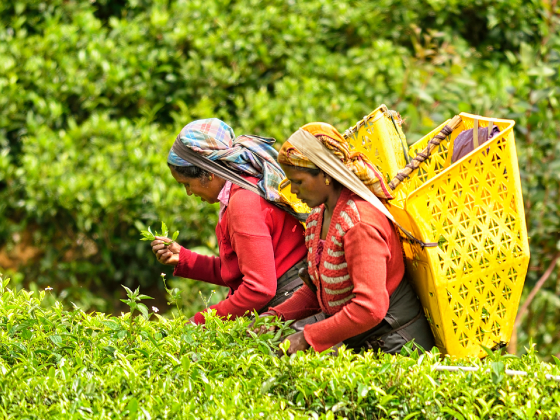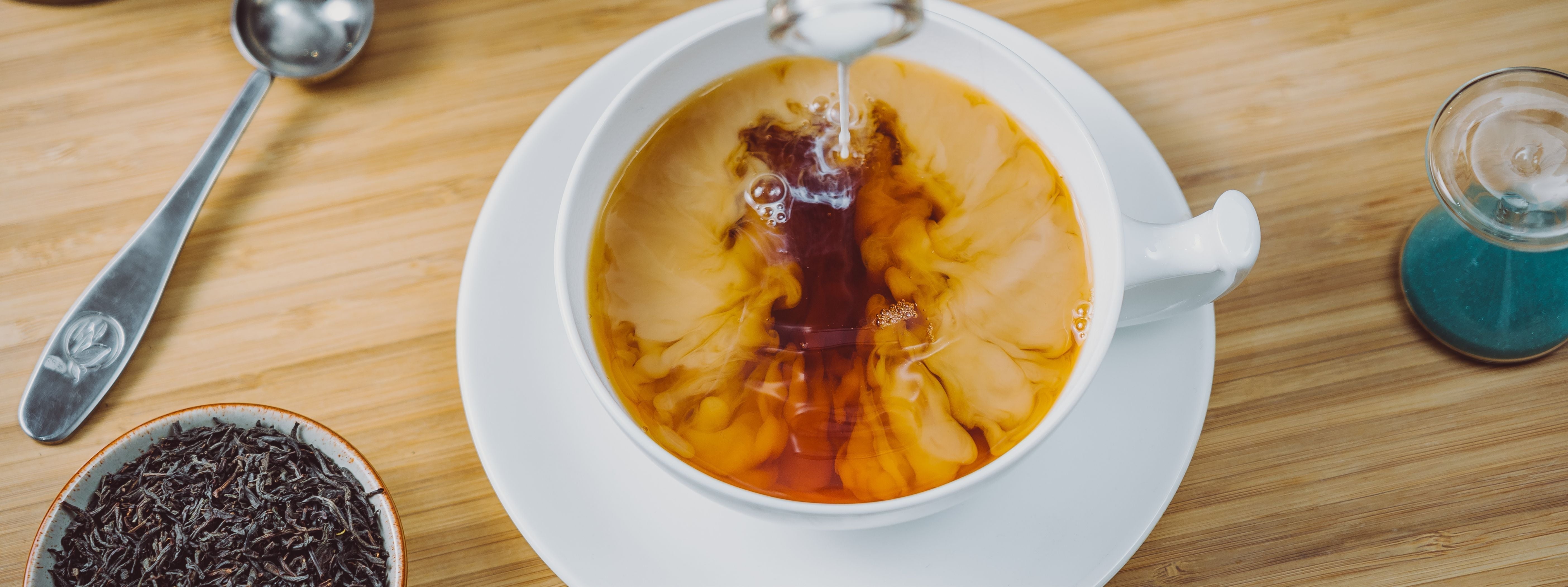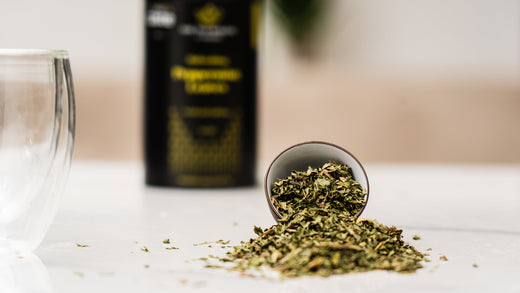The History of Chinese Tea
Tea is thoroughly intertwined with Chinese history and culture, as the place of origin of this beloved drink.
The exact origin of tea is unclear and is shrouded in myth. The most famous legend is that of the mythological Emperor Shen Nung, who supposedly discovered the drink when some tea leaves floated into his cup in the 3rd millennium BC.
It is likely that the discovery tea, although certainly very ancient, was more gradual, with the plant first being used as a seasoning and a medicinal treatment before being consumed as a recreational beverage.
Tea culture majorly developed from the 3rd- 5th centuries AD, during the Jin Dynasty. It became popular as a drink among the social elite: royalty, court officials and Buddhist monks, often as an alternative to alcohol.
It was particularly embraced by spiritual elites; monks would incorporate it into their lifestyle and recommend its consumption for health benefits.
Where monasteries were established, tea drinking would typically spread among the lay population. Buddhists were central to the spread of tea’s popularity throughout China.
Chinese Tea Traditions & Ceremonies

Tea plays a key role in society, although how it is served does depend on the formality of the situation. Often tea is served with the loose leaves directly in the cup, allowing them to drift to the bottom.
One of the most refined ways teas is served in China is the Gongfu tea ceremony. ‘Gongfu’ translates into English as ‘to do something with skill’.
This brewing method is quite different from western-style tea making, which uses a small amount of tea relative to the amount of water and allows the tea to brew for anywhere between 2-5 minutes before typically disposing of the tea leaf or topping up with more hot water.
Instead, the ratio of leaf to hot water is much more equal, and typically the leaves are brewed for 20-30 seconds before straining the brewed beverage. The leaves are then resteeped multiple times, gradually increasing the amount of time brewed each time. This allows all the layers of the tea to be enjoyed – each steep will taste different and bring a new element to the cup.
This evolved into quite an intricated ceremony, with dedicated utensils and teaware accompanying it, such as Gaiwan cups and Yixing teapots.
Offering your guests tea is a typical gesture of hospitality in China and can also be a chance to show off some finer selections and varieties.
Chinese Tea Regions
Tea is grown in many of China’s provinces today, and each has its own unique history and relationship with the brew.
Many of the finest teas are grown in high-altitude conditions (this is true outside of China too), paradoxically because higher altitude regions are harder to grow tea in. The harsher conditions put increased strain on the crop, but this encourages the plant to increase the production of amino acids like chlorophyll, which created an enhance and refined flavour and make for a delicious cup of tea.
Here are 4 major tea producing regions.
Fujian Province
A mostly mountainous region in South China, bordering the Taiwan Strait. It is one of the primary tea producing regions in the country, and produces a huge variety of tea, due to the ideal climate.
High altitudes typically produce better quality tea, as the more intense growing conditions trigger amino acids within the tea plant which help to flavour it, and the humidity is beneficial for the tea plant also.
Yunnan Province
A land-locked, predominantly rural region with a rich history of tea cultivation and is best known as the birthplace of Pu-Erh tea, which is still made there to this day.
Modern Yunnan borders several other countries, and the Silk Road, an ancient trading route carrying all manner of goods, passed through this region, transporting tea and other Chinese luxuries abroad. Like Fujian, it is also mountainous and subtropical, ideal growing conditions for tea.
Zhejiang Province
An eastern coastal province, bordering both Anhui and Fujian provinces. Zhejiang is covered in hills, allowing teas to be grown at higher altitudes for the refined flavour, and is reknowned in China as the place where Dragon Well, or LongJing tea, is grown.
Anhui Province
Another landlocked province, Anhui province has a varied topography and climate. The south is dominated by the Dabie Mountains, and the Yangtze River runs through the region. Anhui is hailed as the birthplace of Keemun tea, China’s best known black tea.
Types of Chinese Tea
With a country as large and as old as China, there’s some many types of tea it can be overwhelming!
We’ve highlighted some of the most famous for you to learn about and try, each with their own unique taste, origin and cultural significance.

Jasmine Green tea was one of the very first flavoured green teas, and this blend has been popular for centuries. The unique floral crispness beautifully complements the grassy notes of the tea leaves.
The freshly plucked tea leaves are mixed with Jasmine buds and lain out to dry; during this process the flowers imbue the tea with their flavour and fragrance.
The cup has a delicate and aromatic flavour and is ideal for a calming and soothing treat.
Dragon Well, or Long Jing as it’s known in its homeland, is one of the most famous and beloved teas in China; it is sometimes known as the national drink, and is often given as a diplomatic gift to foreign dignitaries.
This tea has to be grown and produced in West Lake, Zhejiang Province, to be considered true Dragon Well tea. Traditionally, dragon well is pan roasted, with skilled tea artisans using their hands and the heat to give the leaves their distinctive flat shape.
Dragon Well is known for it’s distinctive roasted nutty flavour (as a result of the pan frying) which highlights and complements the natural grassy flavour of the leaf.
We offer both our Organic Dragon Well and our Supreme Dragon Well.
Pu-Erh is an aged, fermented tea, which originated in the Yunnan province and continues to be produced there to this day, although it remains relatively unknown in the west.
It is a distinctive tea, typically considered in a category of its own apart from black and green tea due to its unique processing method.
The supposed origin of Pu-Erh traces back to the traditional practice of compressing tea into compact discs or slabs. Upon being transported long distances along trading routes and exposed to humid conditions, the tea began to ferment, and the distinctive, earthly flavours this released were discovered.
This tea gets its name from the processing method; the leaves of this tea are hand-rolled into small pellets resembling gunpowder; the Chinese name, zhu cha, translates as ‘pearl tea’ also acknowledges the unique shape.
Rolling can help the tea to contain its freshness and flavours and means it can easily be steeped several times without losing its flavour.
This Chinese tea is popular throughout the world, notably northern Africa, where its blended with mint leaves to create a distinctive flavoured tea.
Our Menthos Gunpowder is inspired by this cultural exchange, and combines the deep, earthy flavour of the gunpowder green tea with the zesty lift of peppermint leaves.
The most famous Chinese black tea, originating from the Anhui Province.
Keemun is slightly lighter than other black teas like Ceylon or Assam, which makes it ideal for drinking without milk, although it is often mixed with other teas to produce English Breakfast and other blends.
It still has the distinctive malty, caramel flavour of a black tea, but with a smoother after taste.
Benefits of Drinking Chinese Tea

Tea has always been consumed for its health benefits alongside its delicious flavour, and it has played a central role in traditional Chinese medicine.
However, there are still health benefits to be found in the modern day in a cup of Chinese tea.
Reduces Stress
Tea contains a unique compound, L-theanine. L-theanine is an amino acid and it has been found to have a calming effect on the mind and can help reduce stress levels and improve sleep quality.
It’s no surprise that tea was incorporated into meditative rituals throughout Chinese history, and you can still enjoy its relaxing effect today.
Reduce Risks of Cancer
Chinese teas, especially green teas, are bursting with antioxidants. Studies have shown that antioxidants known as catechins can be beneficial in reducing your risk of cancer, by helping the body combat the effects of free radicals.
Incorporating just a cup of green tea a day can be a step towards boosting your overall health.
Lowers Inflammation
Chinese tea is also rich in polyphenols, a natural chemical compound. Studies have shown the benefits of polyphenols in treating chronic inflammatory conditions such as arthritis and cardiovascular diseases.
Increases Energy Levels
Traditional Chinese tea is made from the plants of the Camellia Sinensis plant, which is a natural source of caffeine. This can be a great way to start your day with an energy boost, or to stay alert throughout the rest of the day.
Why not swap your morning coffee for a cup of Keemun? The caffeine release is much less intense and less likely to leave you with caffeine jitters.
Conclusion
There are few countries who can boast the same rich history and relationship with tea, and we haven’t even covered all the varieties there are to enjoy!
To get a glimpse of the rich cultural heritage, delicious flavours and health benefits of Chinese teas, see our full range of Chinese teas that we are proud to offer at The Tea Makers of London.
